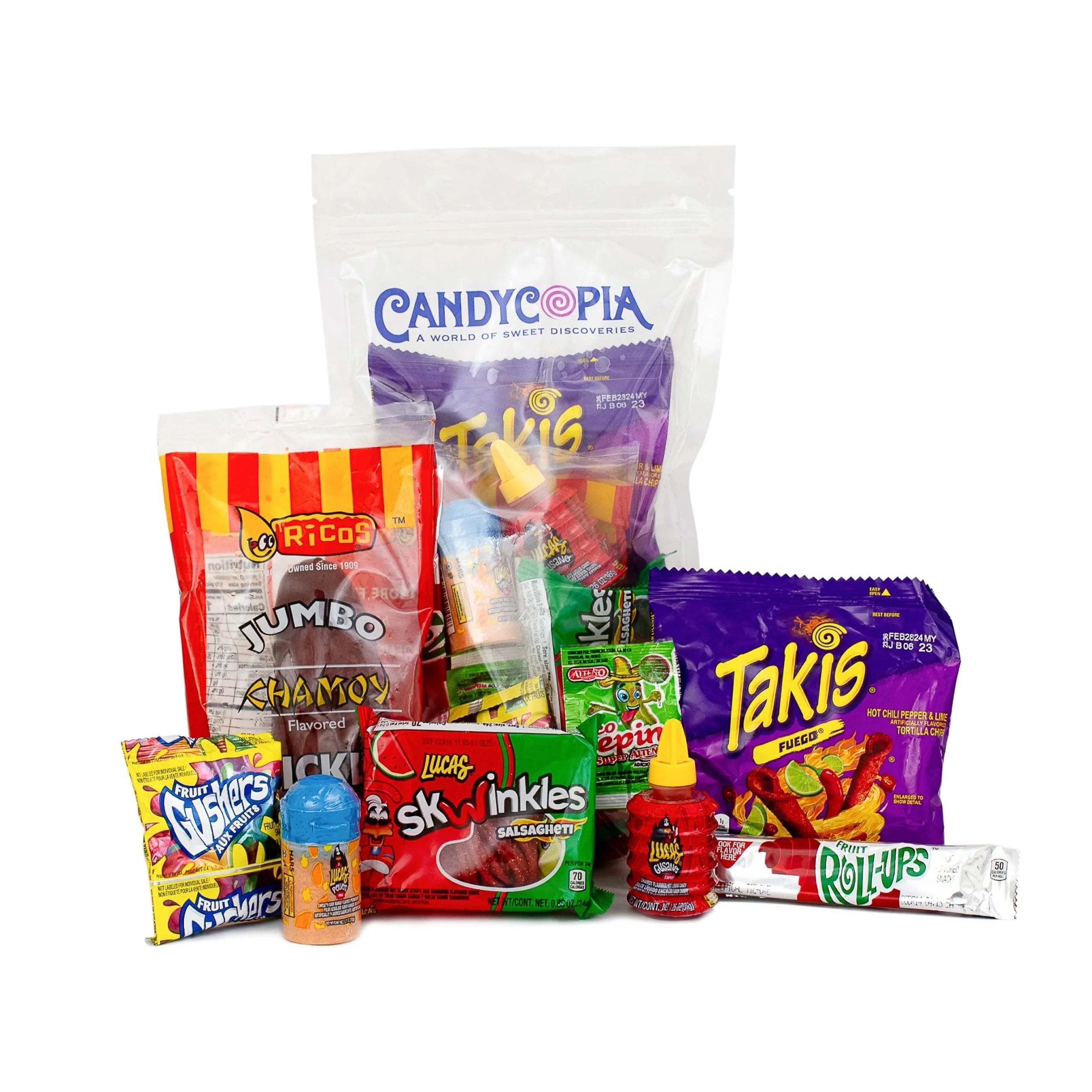
Exploring the Sweet World of Famous Mexican Candy
Nestled within the intricacies of Mexican culture is the vibrant, flavorful world of Mexican candy. These delectable treats are not merely sweets but an expression of Mexican history, culinary innovation, and regional uniqueness. This article embarks on a journey to unravel the layers of Mexican candy's allure.
From sweet to spicy, colorful to classic, these candies captivate not only the taste buds but also the heart and soul.
Join us as we navigate the savory sea of textures, flavors, and stories behind famous Mexican candies, exploring their cultural significance, unique ingredients, and regional variations.
Table of Contents:
- Types of Mexican Candies
- Popular Brands and Products
- Unique Flavors and Ingredients
- Regional Variations
- Cultural Significance of Mexican Candies
Types of Mexican Candies: An Array of Flavors
Mexican candies are a testament to the country's culinary diversity, ranging from spicy to sweet, tangy to chocolaty. Noteworthy types include Tamarind candies, often highlighted by their pulpy texture mixed with chili, creating a signature tangy-spicy kick. Pulparindo is a beloved classic in this collection, combining tamarind pulp, sugar, and salt for an irresistible treat that leaves you craving more.
Another standout is Skwinkles, a fruit candy famous for its sweet and sour punch. These candies often come adorned with an extra dusting of chili powder, a quintessential Mexican twist that blends heat and sweetness in perfect harmony. Meanwhile, De La Rosa Marzipan charms with its soft, crumbly texture and peanut essence, offering a rich, satisfying taste that is both nutty and sweet.
Regional Variations: A Tapestry of Traditions
Candy production in Mexico is as diverse as the country's vibrant regions. In Oaxaca, for example, the influence of native ingredients and traditions is prevalent in candies like Oaxacan chocolate, which merges local cacao with spices like cinnamon for a rich flavor that pays homage to ancient culinary practices. Jalisco, on the other hand, is renowned for creating Chaca Chaca, a spicy candy featuring a delightful blend of chili and mango, embodying the area's love for bold flavors.
The Yucatán Peninsula introduces us to sweets like Cocadas, delectable coconut candies that echo the region's coastal environment. Their soft, chewy texture delivers a taste of sunshine, with sweetness balanced by the nutty flavor of toasted coconut.
Popular Brands and Products: Icons in Sweetness
Several brands have become household names when it comes to Mexican candies, thanks to their dedication to flavor and quality. Vero Candies is synonymous with a variety of lollipops that deliver an explosion of savory and sweet tastes. Vero Rebanaditas, for instance, offers a tantalizing watermelon-flavored lollipop dusted with chili—a combination that excites and refreshes with every lick.
Ricolino is another giant in the Mexican candy landscape, known for the quirky and whimsical Paleta Payaso. This marshmallow, chocolate-coated lollipop not only entices with its delicious taste but also adds a playful element with its smiley-faced design, making it a favorite among children and adults alike.
Unique Flavors and Ingredients: A Symphony of Surprise
The allure of Mexican candies lies in their unique ingredients and flavors, a creative synergy of native fruits, spices, and techniques. Tamarind, chili, mango, and chamoy frequently appear, each contributing distinct profiles that challenge the conventional boundaries of candy-making.
Chamoy, in particular, is a staple in many candies, providing a tangy, spicy, and subtly sweet flavor. Whether as a drizzling sauce over candies like Salsagheti, a gummy candy shaped like spaghetti, or infused within lollipops, chamoy exemplifies the adventurous spirit of Mexican flavor profiles.
Cultural Significance of Mexican Candies: More than Just Sweets
Mexican candies go beyond flavor; they are cultural icons woven into the fabric of social gatherings, celebrations, and daily life. These treats are deeply embedded in festive occasions such as Día de los Muertos and posadas, where they symbolize joy, sharing, and tradition. Candies like Alegrías, crafted from amaranth seeds and honey, echo ancestral ties, celebrating Mexico’s rich heritage of indigenous ingredients and culinary practices.
Advancing Flavor Through Time: The Modern Impact
As global interest in Mexican candies grows, these confections find new audiences while maintaining their traditional roots. Brands like Lucas, popular for its spicy candy powder, engage in the international market, where the fascination with spicy-sweet balances continues to captivate adventurous palates. Furthermore, the rising demand for authentic, culturally rich experiences propels candies like Cajeta-based treats, made from indulgent goat's milk caramel, to new heights of popularity outside Mexico.
Conclusion: Wrapping Up the Sweet Journey
The world of Mexican candies is an exhilarating journey through taste, culture, and tradition. From the intricate mix of ingredients in a Paleta de Chile to the historical essence captured in a simple Alegría, these sweets invite us into a world where every candy tells a story. As we've seen through our exploration of flavors, regional nuances, and cultural significance, Mexican candies are more than mere indulgences—they are celebrations of a vibrant culinary tradition that continues to touch lives across generations.
In essence, the journey through Mexican candies is akin to unraveling a tapestry of taste, history, and emotion. With each bite, these treats serve as a reminder of the rich, diverse heritage they originate from—a heritage that is cherished and celebrated far beyond the borders of Mexico. So, next time you reach for a tantalizing piece of Tamarind candy or a playful Paleta Payaso, savor the story it has to tell and the tradition it represents—a tradition as vivid and captivating as the candies themselves.
